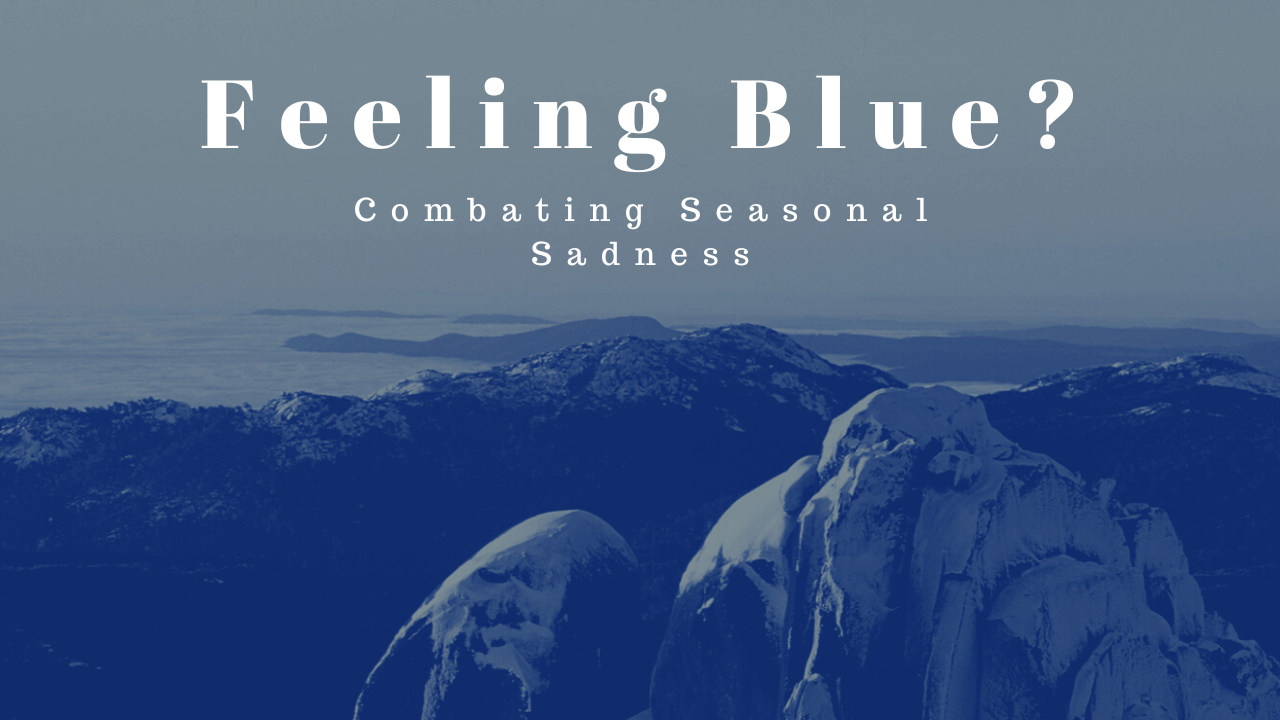Combating Seasonal Blues

With longer nights and shorter days, no matter how warm the climate you may be living in during the winter months, you may find yourself feeling more tired, lethargic, and a little blue with decreased sunshine. Usually, we associate a low mood and even seasonal affective disorder (SAD) with low levels of vitamin D from less sun exposure. However, there is more to it than just low vitamin D levels. Having a greater understanding of the role of light exposure and sun exposure allows us to have a plan of action when entering into the winter months in order to protect our mood, hormone balance, and energy.
Our skin is our largest organ, and it has a profound ability to stimulate hormone production under specific conditions. Studies show that increased UVB exposure from safe levels of sunlight exposure encourages testosterone production, leading to improved mood and feelings of motivation, increased energy, and maintained libido through improving hormone balance.
Now that we see how light exposure to our skin and eyes has the capacity to provide information for our hormonal processes and organ function, it is no surprise that sun and healthy light exposure has a profound impact on our immune system as well. The brain is connected to our immune function in the sense that when UVB light comes into contact with our eyes and skin, it signals our autonomic nervous system to activate the sympathetic state of the nervous system. When this occurs our spleen function is enhanced. The spleen is so important as our T cells (very important immune cells) differentiate in our spleen, and T cells serve as one of the first lines of defense each time we come into contact with viruses, bacteria, etc. Therefore, with sufficient sunlight exposure, our immune system is stimulated and can prevent exposure of viral particles, for example, from entering into our cells and leading to infection.
We also know the importance of light exposure via viewing sunlight and brighter lights in the morning to regulate our circadian rhythm, energy and mood (see blog post, "Use Light Exposure to Hack your Sleep Cycle and Alertness"). However, this is even more necessary to abide by in the winter months in order to avoid slipping into a winter slump. This may mean allowing an additional 30 minutes in the morning to go for a walk in the morning at sunrise or upon waking. By simply viewing sunlight (avoid direct eye contact to avoid eye damage) in the morning, we are able to enhance dopamine production, leading to improved mood and motivation in the daytime.
The key to treatment with light therapy is to ensure that both eye and full systemic skin exposure is achieved vs. targeted light therapy on a small region of our skin. This is proven to have the most beneficial impacts on our immune system, hormone pathways, and the feel-good neurotransmitter release.
UVB light exposure early in the day drastically boosts mood by impacting dopamine via light exposure to our eyes and skin. The best time to get this light exposure is as early in the day as possible, such as sunrise and early afternoon. To ensure that we do not disrupt dopamine pathways that will elevate our mood during the day, it is crucial that we avoid all bright lights and UVB lights, between the hours of 10 PM to 4 AM. This is just how our circadian clock is established. If you know that you tend to struggle with a low mood, especially in the winter time with shorter days, you may want to even avoid bright synthetic lights a couple of hours before 10 PM to ensure a proper circadian rhythm is maintained and that dopamine pathways will not be disrupted. Sleep is so important to maintain balanced hormones, cortisol production, blood sugar regulation, and mood. When prone to feeling the seasonal blues with less sunshine, we can take advantage of tools that optimize our sleep to improve our mood.
It is worth mentioning that vitamin D levels do have an impact on our mood as well. Vitamin D is needed for proper gene expression, which leads to improved immune function, and improved neurotransmitter production. Vitamin D levels do tend to decline in the winter seasons as we spend less time outdoors, have much less sun exposure, and are usually covered in more clothes, impeding vitamin D production. Speak with your medical provider about proper supplementation with vitamin D if this is a concern for you.
Adjusting to shorter days and longer nights in the winter time can definitely take a toll on our body and mind, but with the use of light exposure and sunlight viewing at the right times, we can hack our mood and immune system to prevent staying stuck in the seasonal blues!
Contact TCLM in order to get plugged into a community of your choice to learn, grow, and connect with like-minded individuals!
Resources:
“Seasonal Affective Disorder.” National Institute of Mental Health, U.S. Department of Health and Human Services, https://www.nimh.nih.gov/health/publications/seasonal-affective-disorder.
Huberman, Andrew. “Using Light (Sunlight, Blue Light & Red Light) to Optimize Health.” Huberman Lab, 17 July 2022, https://hubermanlab.com/using-light-sunlight-blue-light-and-red-light-to-optimize-health/.
